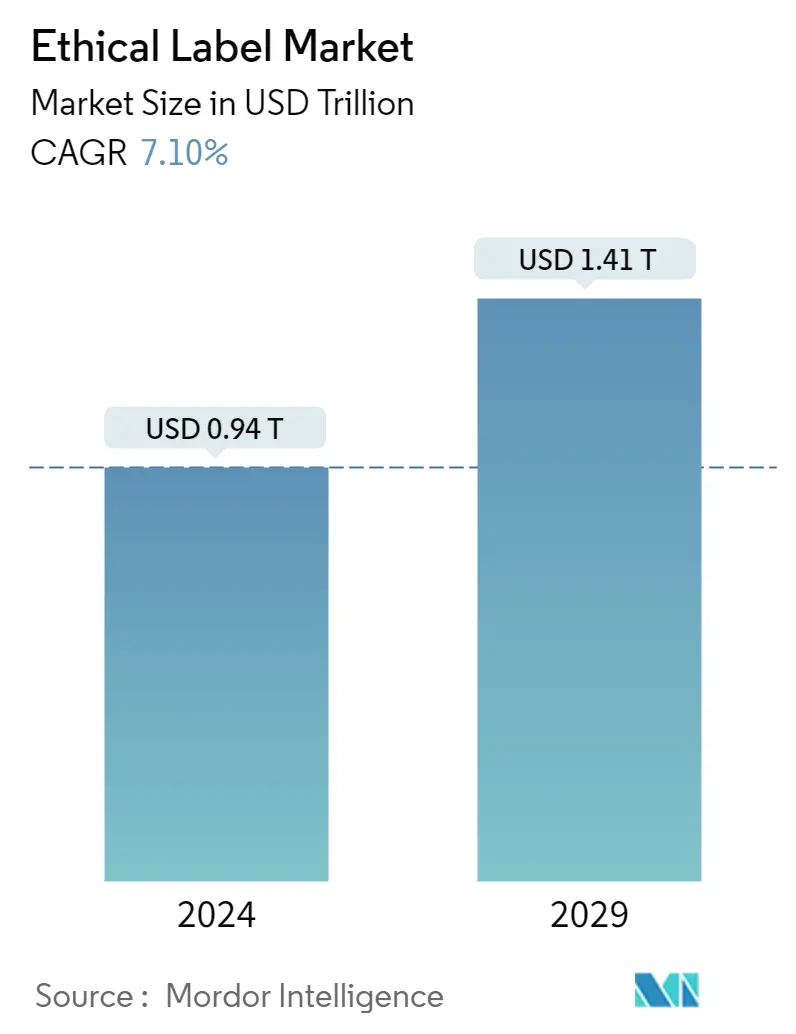Market Size of Ethical Label Industry

| Study Period | 2019 - 2029 |
| Market Size (2024) | USD 0.94 Trillion |
| Market Size (2029) | USD 1.41 Trillion |
| CAGR (2024 - 2029) | 7.10 % |
| Fastest Growing Market | Asia Pacific |
| Largest Market | North America |
Major Players
*Disclaimer: Major Players sorted in no particular order |
Need a report that reflects how COVID-19 has impacted this market and its growth?
Ethical Label Market Analysis
The Ethical Label Market size is estimated at USD 0.94 trillion in 2024, and is expected to reach USD 1.41 trillion by 2029, growing at a CAGR of 7.10% during the forecast period (2024-2029).
A high degree of awareness and concern regarding the right food consumption drives food and beverage companies toward transparency and adopting ethical labels for their products.
- The increased consumer interest in sustainable practices, fair trade, and ethical sourcing drives the ethical labels market. The market is expanding because consumers are increasingly interested in learning how individual food products affect the environment. The ethical labels market is driven by the acceptance of certain foods & beverages and the shift in consumers' consumption habits. The contribution of Jewish and Muslim consumers can be attributed to the rise of kosher and halal ethical-certified products.
- The advocacy of high ethical standards for manufacturing and consumption increasingly influences companies to opt for ethical labels, which promote environmental sustainability, animal well-being, social justice, equality, and adherence to a more promising workplace and worker qualities, thereby boosting the market.
- A sizeable population, especially millennials, has been influential in increasing awareness toward healthy and clean-certified products. This trend is increasing in the baby boomer population as well. There is a gradual shift among consumers toward more nutritious eating habits. According to the Global Organic Trade Guide, in 2022, the retail sales value of health and wellness (HW) packaged food and beverages in Japan amounted to around USD 56.3 billion. The sector was forecast to grow steadily and exceed USD 57.3 billion in 2025.
- However, ethical labels often require additional certifications and compliance measures, which can lead to increased costs for manufacturers and suppliers. These additional costs may be passed on to the consumers, making ethical products relatively more expensive compared to non-ethical alternatives.
- Another restraint for the studied market is the limited availability of products with ethical labels in some regions or markets. This can be due to various factors like limited production capacity, distribution challenges, or lack of demand in certain areas. Also, standardized regulations or guidelines for ethical labeling can create clarity and consistency in the market.
